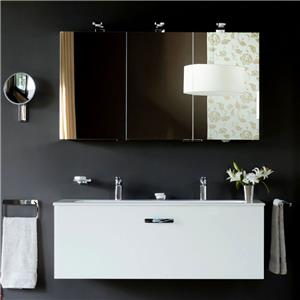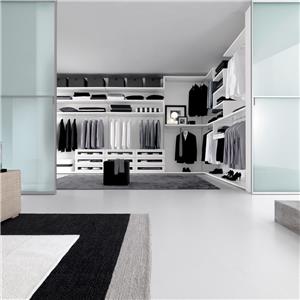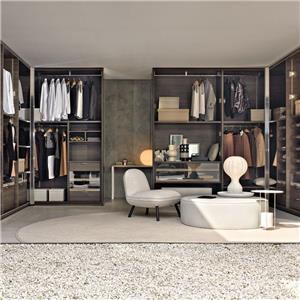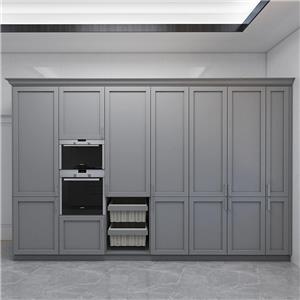4 Design Tips for Efficient Wardrobe Storage
4 Design Tips for Efficient Wardrobe Storage
The wardrobe is an essential storage design for every household. The size of the wardrobe is often determined by the size of the house, while the quantity of clothing depends on the habits of the residents. Many times, people with smaller houses have more clothes. Therefore, a well-thought-out wardrobe design becomes crucial. In this article, we will share some wardrobe design tips.
1. Optimal Drawer Placement
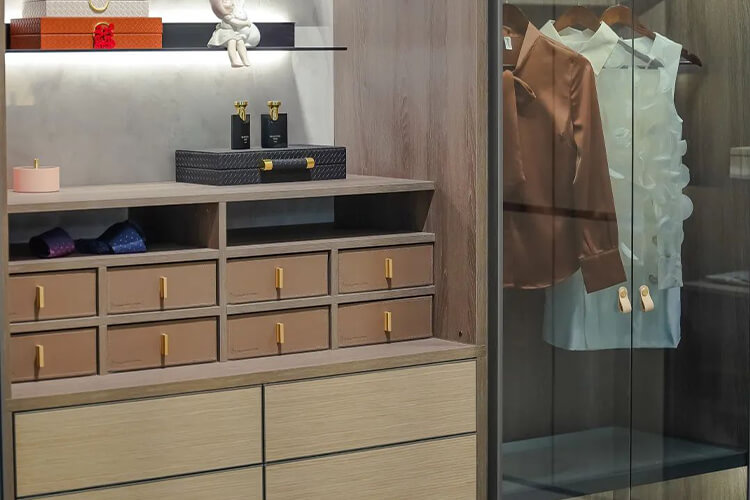
Having drawers in the wardrobe is necessary. They are perfect for storing smaller clothing items such as underwear and socks. Keeping these small garments stacked together with larger ones can make finding them quite challenging. Moreover, to ensure convenience, avoid placing the drawers at the very bottom of the wardrobe. Constantly bending down to find underwear and socks can become cumbersome over time, and those drawers might end up being used for random clutter.
2. Swing Doors vs. Sliding Doors
The choice of wardrobe door design is a significant detail that affects the overall user experience. There are two common types: swing doors and sliding doors. Let's discuss each one:
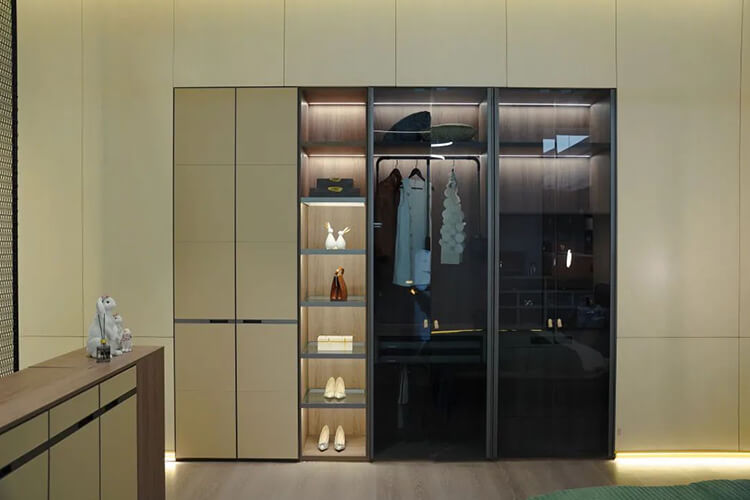
Swing doors: These doors open outward, and there should be no furniture obstructing the opening area. When the doors are open, the entire interior of the wardrobe is visible, making it easy to organize and find clothes. Swing doors have few disadvantages.
Sliding doors: These doors slide horizontally, and they don't get affected by other furniture around the wardrobe. However, they can only open one side at a time, and if there are clothes protruding on the guide rails, it can hinder smooth closing over time.
3. Horizontal and Vertical Divisions
The arrangement of compartments inside the wardrobe plays a significant role in the overall design. The most common methods are horizontal and vertical divisions:
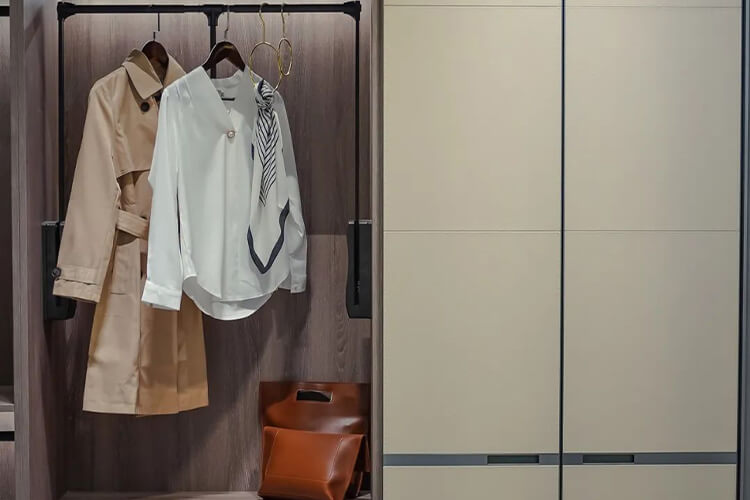
Horizontal divisions: Aligning the divisions from left to right, while ensuring the upper and lower edges are at the same level. If the upper edge does not align properly, it can disrupt the aesthetics, making the room appear crowded and narrow.
Vertical divisions: Placing the divisions at one-third of the wardrobe's height, following the golden ratio principle, yields the best visual effect. For continuous vertical divisions, maintain a sense of rhythm and consistency so that each compartment has its designated space for specific items. This creates an organized and minimalist atmosphere.
4. Built-in Wardrobe
Wardrobes often occupy a significant amount of space. Placing the wardrobe against the bedroom wall can make the room feel small and cramped, which is undesirable for a place meant for relaxation. Therefore, if possible, consider building the wardrobe into the wall. By creating a recessed space about 600mm deep and integrating the wardrobe within it, the wardrobe will seemingly disappear into the wall, visually expanding the room.
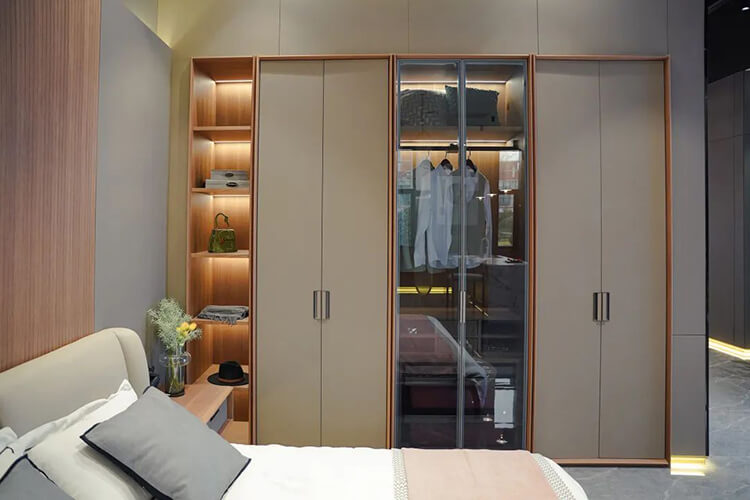
By considering these design tips based on your specific needs, you can create a practical and efficient wardrobe design. If you want to learn more, feel free to contact us at Allure.

